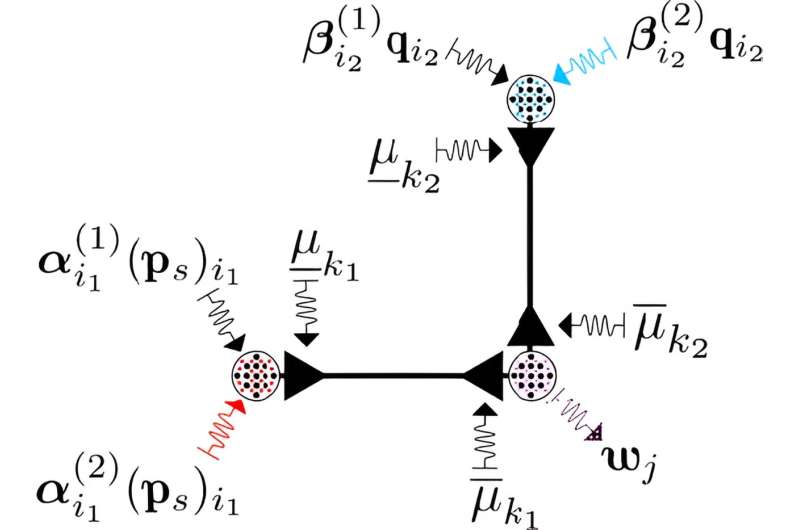This article has been reviewed according to Science X's editorial process and policies. Editors have highlighted the following attributes while ensuring the content's credibility:
fact-checked
trusted source
proofread
Math allows hydrogen blend in natural gas pipelines

Mathematical modeling can show how to safely blend hydrogen with carbon dioxide for transport in existing pipeline systems. A secure and reliable transition to hydrogen is one of the proposed solutions for the shift to a net-zero-carbon economy.
"Mixing hydrogen into a natural gas pipeline changes how the gases flow, which will create new conditions for operators," said Anatoly Zlotnik, a co-author of a new paper on the modeling in the journal PRX Energy. Zlotnik, a mathematician at Los Alamos National Laboratory, has expertise in modeling, designing and controlling energy-transmission systems. "Our modeling shows that injecting hydrogen gradually into a natural gas pipeline network allows safe, predictable operations."
Using nonlinear partial differential equations, Zlotnik and his Los Alamos colleagues developed the model for transporting heterogeneous mixtures of natural gas and hydrogen through pipeline systems. The infrastructure modeling includes compressor and regulator units, supply stations that inject gas into the network at defined pressure and hydrogen blends, and flow stations that withdraw the mixture from the network, according to the paper.
Solving challenges to pipeline operation
Transporting hydrogen in existing natural gas pipeline networks enables operators to maximize the utility of these extensive and expensive facilities as part of a strategy to reduce carbon-emitting fossil fuels. Hydrogen is much lighter than natural gas, which is mostly methane, so blending them challenges pipeline operation in new ways.
The Los Alamos team's mathematical modeling determined that limiting the rate of change of hydrogen injection into a natural gas pipeline will prevent large, rapid changes in pressures. The team's methods for simulating a pipeline network could allow operators to develop standards on injection rates.
Hydrogen offers several advantages as a clean fuel that doesn't emit CO2. In a fuel cell, hydrogen plus oxygen create electricity to power cars, trucks and facilities. Hydrogen can also be blended with natural gas for use in appliances such as household furnaces and dryers, or it can be burned to power manufacturing facilities or generate electricity.
More information: Luke S. Baker et al, Transitions From Monotonicity to Chaos in Gas Mixture Dynamics in Pipeline Networks, PRX Energy (2023). DOI: 10.1103/PRXEnergy.2.033008


















